My kids and I may be afraid of the dark, but we held our breath and turned out all the lights this week for some glowing science magic! Now to clarify we did keep one light on, a black light, and gathered up some glowing liquids to make a mesmerizing Magic Potion Density Tower.

This post contains affiliate links to products.
Magic Potions Density Tower
NOTE: You must have a Black Light for this to work. The glowing liquids are UV light reactive. I highly recommend this black light
because it’s durable and powerful. An incandescent black light bulb isn’t powerful enough to get a good glow.
Classroom Tip If you are doing this with a group of kids, purchase each student one of these blacklight LED’s so they can take them home with their project! They will need to aim the flashlight at their towers to get them to glow.
Materials
- Black Light
- Tall Clear Glass or Jar
- Fluorescent Paint
- Corn Syrup
- Water
- Yellow Highlighter
- Tonic Water (must have quinine)
- Neon Glitter
(optional)
- Baby Oil
- Eye Droppers (optional)
Other liquids to try: (Note-these don’t glow but may be used when making a density tower)
- Dish soap
- Rubbing alcohol
- Milk
- Cooking Oil
Instructions
Make Glow Water: Break open a highligter and remove the ink cartridge. Soak the ink cartridge in a glass of water for several hours.
Make Glow Syrup: Combine 1/3 cup of clear corn syrup with a few tablespoons of neon paint. Stir to combine
Make the Tower:
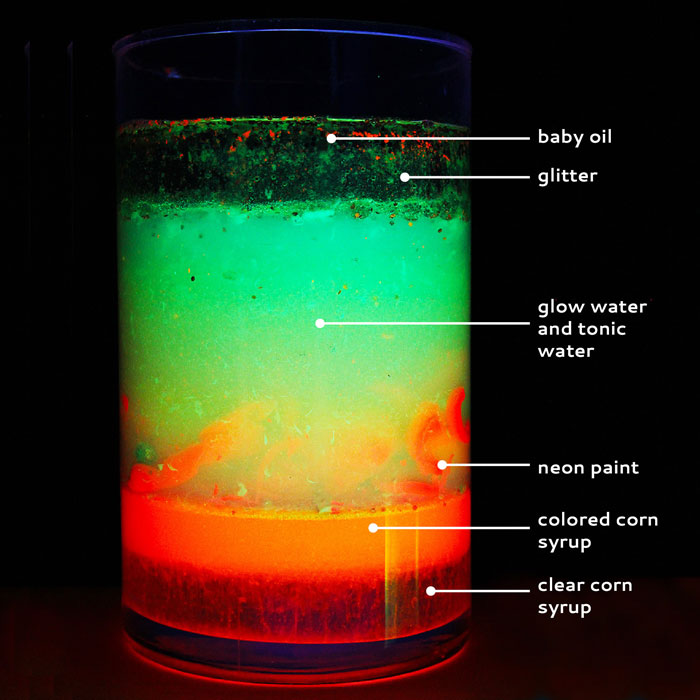
For the most dramatic effect I recommend making your tower in the dark using the black light. Have all ingredients laid out beforehand nearby.
- Step One Pour a layer of corn syrup into the bottom of your glass.
- Step Two Add additional ingredients in this order:
- Glow Syrup
- A big squeeze of neon paint
- Tonic water
- Glow water
- Baby Oil
- Glitter
- Step Three After each layer is added let the liquids settle.
- Step Four Adding glitter to the top of the tower and watch as it slowly coagulates and drops down the layers of the tower. Do the same with additional squeezes of neon paint. Add drops of glow water to the top of the tower using droppers and watch them float through the layers and disappear.
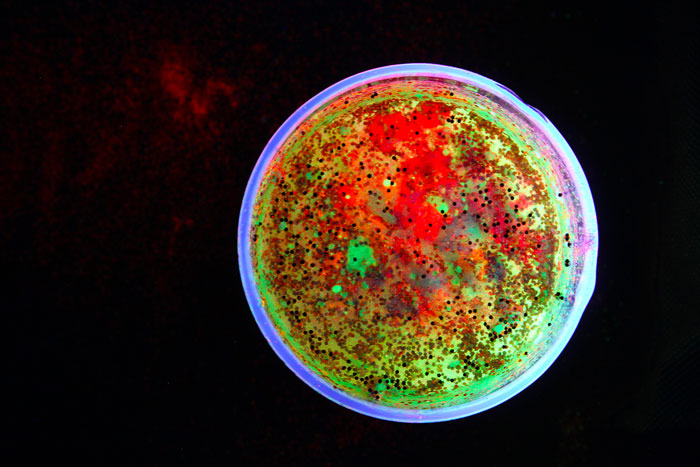
Tips
- Tilt the glass when adding in each liquid layer. Gently pour the new liquid along the side of the glass when adding it. It will help the liquids stay as separate as possible.
- Tonic water naturally glows because it contains chemical called quinine, which fluoresces. Make sure your tonic water contains quinine.
- Let it settle. Letting the tower sit over the course of a few minutes or even a day will allow the layers to really settle and separate.
Here’s what our tower looked like the next day after settling:
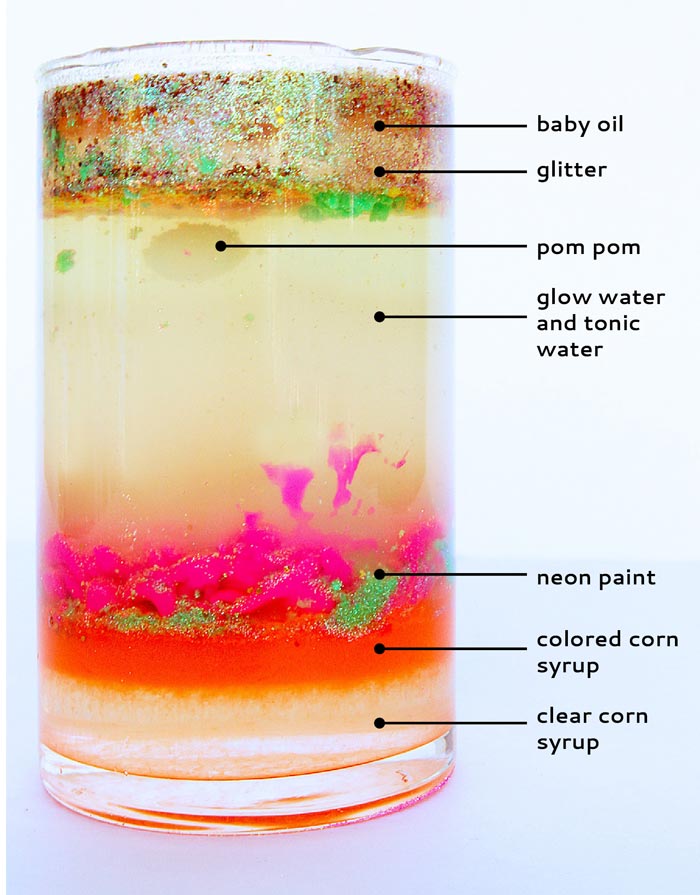

The Science Behind the Tower
Our glowing density tower is a fun way to demonstrate two scientific concepts: density and UV light.
Density is the measure of how heavy the particles that make up a substance are and how close the particles are together. For example, water and oil have different densities: water molecules are very densely packed while oil has more loosely packed molecules making water heavier than oil. When you combine liquids of different densities they naturally separate with some liquids sinking and others floating.
UV Light Our glowing tower also illustrates UV light. Black lights emit a type of light called long wave ultraviolet light; certain materials react to this UV light and fluorescence, or glow. Neon materials in particular glow brightly when exposed to UV light. Certain natural materials and chemicals also glow when exposed to UV light including corals, jellyfish, some arachnids, and minerals.
Looks Like
Robert Williams Wood. Robert Williams Wood was a physicist and inventor credited as “father of both infrared and ultraviolet photography.” He developed Wood’s glass in 1903 which blocked out most visible light but allowed UV light to pass through it. This type of glass was used to make black lights until other materials replaced it in recent years. Wood suggested that it be used for secret communication among other things. He also developed the Wood’s Lamp, which is used in dermatology to detect certain skin conditions, which fluoresce under ultra violet light. Among other interesting parts of his career Wood also photographed sound waves by using sparks and their reflections. You can SEE sound waves here.
More Glowing Fun
If you love glowing science be sure to check out our Glowing STEAM project round-up here:
We’ve got lots more STEAM Halloween projects to try in our STEAM KIDS HALLOWEEN eBook.
Peek inside and find out more here:
Are you passionate about raising creative kids?
Join over 14,890 parents and educators who want connect with kids and nurture their creative process through magical, easy projects you can do TOGETHER.
Send me awesome creative project ideas!
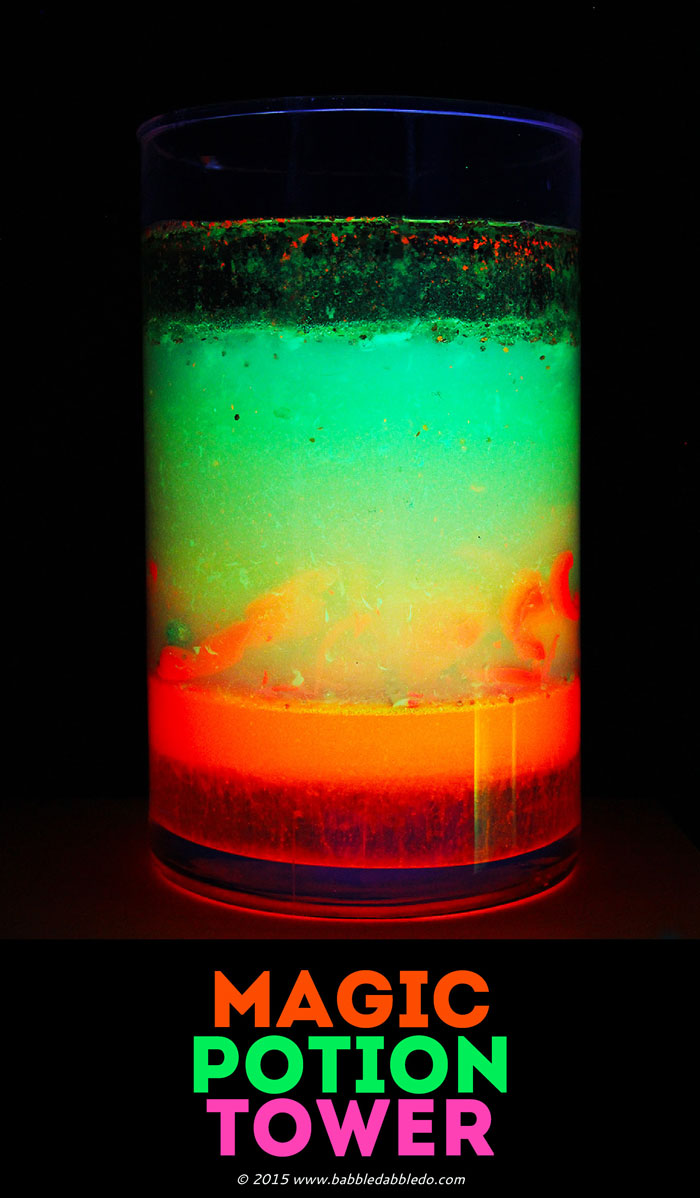
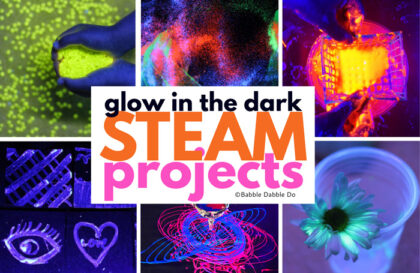
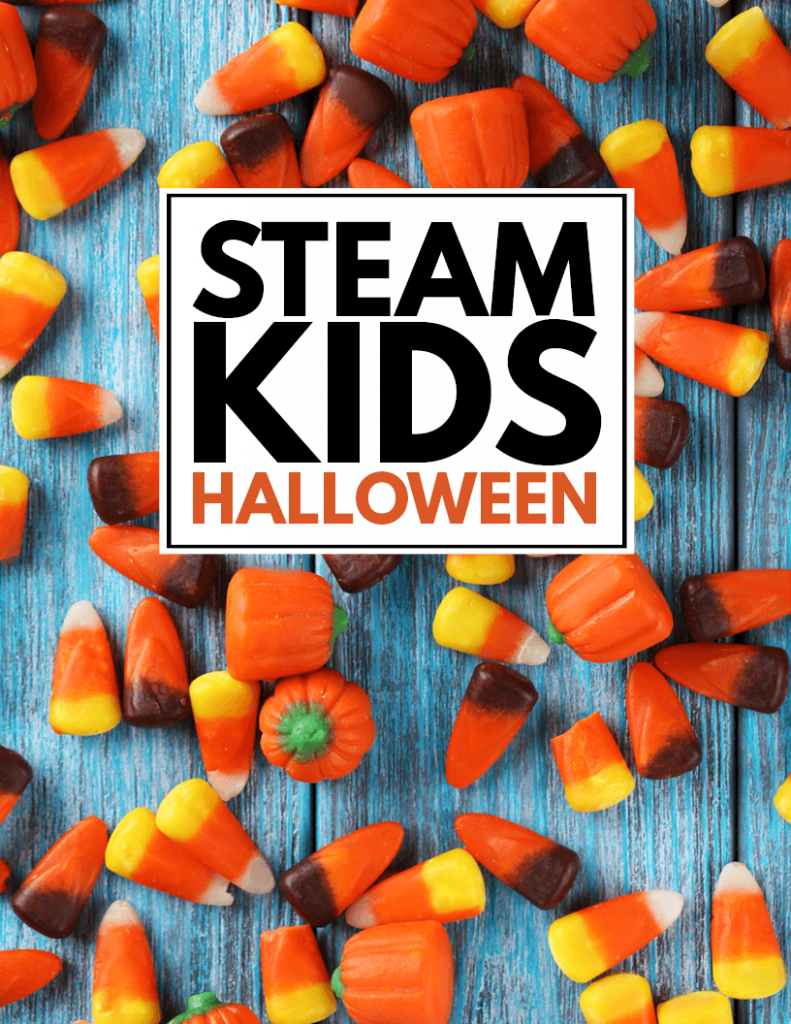
Fun and gooey! Gotta break out the black light.
Seriously cool idea Ana! I had no idea that the ink in highlighters would fluoresce! We’ll definitely have to check out the black light. Fun!
Seriously cool idea Ana! I had no idea that simple highlighters could fluoresce! We’ll have to check out the price of black lights. Fun!
Amazing. This is a breathtaking experiment. I can’t wait to try one with my son.
Yay! So happy to hear it!
Oh, my! I’m sure my son will SERIOUSLY love this idea!
He loves concoctions!
Yay!
Why is the glow syrup (Fluorescent paint and corn syrup) lighter than the regular corn syrup? I figured it would be heavier because there is another viscous mixed in. Also, this is a great activity. I’ve told my friends to have their kids try it out.
Good question! I am not sure why that is Lily!
Buddy! really loved it. Excellent process to make light in water. I want to make it. Specially thanks for video, it will help us. I think it is not a tough technique.
Those look like so much fun to try. I’ll have to show the kids them and let them pick out a project or two to try.
how long does it last for (glowing in the dark)?
Indefinitely as long as you have a blacklight 🙂
Just wanted to stop by and say thank you so much again Ana…I bought the black lights & the flash lights when this post came out & now during COVID I’m SOO glad I did! We just have one question I already asked on your Facebook page of this shared during your LIVE in my Garage Series—> because Laundry Detergent can be used as UV Paint & is super thick; can I use it as a layer in this science project? I don’t want to know what will happen—just if it will work?!?! Thank you.
Hi Jeanine- Sorry I missed your other questions! I’m glad you asked again here. I have tried using laundry detergent as a layer but I can’t honestly remember if it worked or not…If you try it will you let me know? But yes it will glow brilliantly! And I am thrilled to hear you are enjoying the black light! Hope you are all doing well XOXO
Omgsh it soooo worked! So, the alcohol was a horrible addition —I wouldn’t suggest it due to smell & it caused a fog we couldn’t lift. That was the bad part, but we’re redoing it today! In my test clear liquid glass, I tried the Blue Tide was SUCH a fantastic addition bc it acts completely different from the rest of the liquids! It literally blue blobs around, settling at the bottoming, & breaks up into other shapes! And of course it glows! Thanks you again so much!